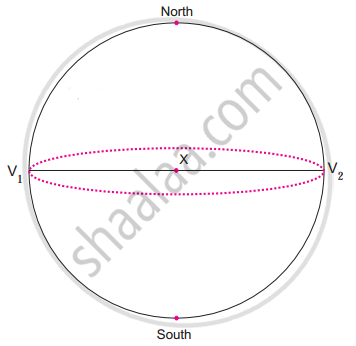Advertisements
Advertisements
प्रश्न
Use the below figure for the following:
- In the upper portion of the circle, at the centre X, draw angles of 20°, V1 X K1 and V2 X K2; K1 and K2 being the points on the circle. Draw an ellipse joining K1 and K2.
- In the lower half of the circle, mark angles of 60° and name the points on the circle as P1 and P2.
- Draw an ellipse joining P1 and P2.

Can you tell?
- Are the distances between K1 K2 and P1 P2 the same?
- Compare the distances XK1 and XP2. Are these distances the same or are they different?
- Now compare the ellipses you have drawn.
- Which is the larger ellipse? Why?
सारिणी
उत्तर

- No, the distance between K1 K2 and P1 P2 are not the same.
- No, the distances are the same.
- The ellipse joining P1P2 is larger than the ellipse joining K1K2.
- The ellipse joining P1P2 is larger because:
- The points P1 and P2 are farther apart than K1 and K2 due to the larger subtended angles (60° vs. 20°).
- This greater distance increases the size of the ellipse, making it wider and larger.
shaalaa.com
क्या इस प्रश्न या उत्तर में कोई त्रुटि है?
